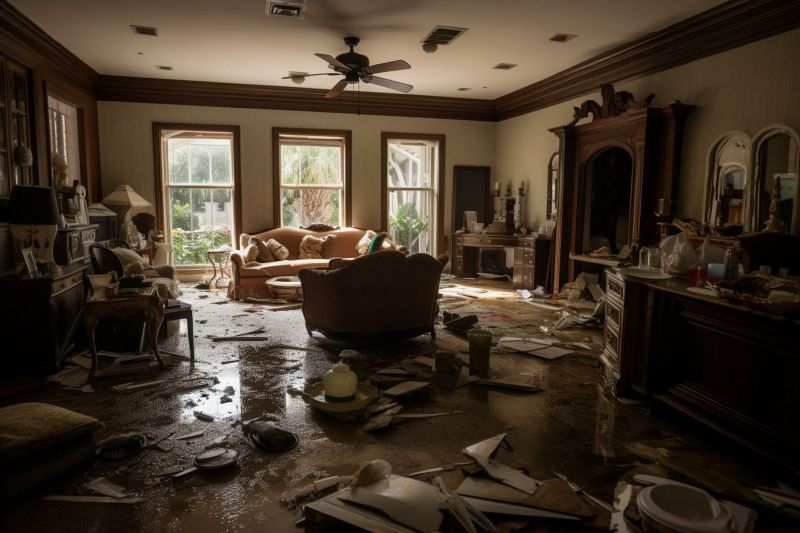A home is more than just bricks and mortar; it's a haven, a sanctuary, a reflection of ourselves. So when water damage strikes, it's not just a property issue; it's a personal one. It's a violation of our security, a threat to our comfort, and a potential health hazard.
But amidst the initial shock and devastation, remember: water damage can be recovered from. With prompt action, professional expertise, and a little know-how, you can restore your home's heart to its former glory.
The Immediate Steps
- Stop the Source: The first priority is to stem the flow of water. Whether it's a burst pipe, a leaking roof, or an overflowing appliance, locate the source and shut it off if possible. If not, call a plumber or emergency services immediately.
- Minimize the Damage: Once the water is stopped, act quickly to contain and mitigate the damage. Move furniture and belongings away from affected areas, scoop up standing water, and open windows and doors to promote air circulation and prevent mold growth.
- Document the Damage: Take photos and videos of the affected areas, damaged belongings, and any visible signs of mold or mildew. This documentation will be crucial for insurance claims and restoration work.
- Contact Your Insurance Company: As soon as possible, file a water damage claim with your insurance company. They will guide you through the claims process and provide you with a list of qualified restoration professionals.
The Restoration Process
Once you've contacted your insurance company, it's time to call in the professionals. Water damage restoration companies have the expertise and equipment to effectively dry out your home, prevent mold growth, and repair any structural damage.
The restoration process typically involves:
- Water extraction: Using powerful pumps and industrial-grade vacuums, professional crews will remove all standing water from your home.
- Dehumidification: Dehumidifiers will be used to extract moisture from the air and prevent mold growth.
- Drying and structural repairs: Affected areas, such as walls, floors, and ceilings, will be dried using specialized equipment. Any necessary structural repairs will be made to ensure the integrity of your home.
- Mold remediation: If mold is present, professional mold remediation services will be required to safely and effectively remove it.
- Cleaning and disinfecting: Once the drying and restoration process is complete, your home will be thoroughly cleaned and disinfected to remove any lingering bacteria or contaminants.
Preventing Future Water Damage
Once your home has been restored, take steps to prevent future water damage:
- Regularly inspect your plumbing system for leaks and worn-out components.
- Clean gutters and downspouts to prevent rainwater from pooling around your foundation.
- Install a sump pump in your basement if you live in an area prone to flooding.
- Invest in a water leak detector to alert you to any potential problems early on.
Remember, water damage recovery is a journey, not a destination. With the right approach, professional help, and a little patience, you can restore your home's heart and create a haven once again.
Additional Tips
- If you have sentimental belongings that have been damaged by water, don't throw them away right away. There are professional restoration companies that specialize in restoring water-damaged items.
- Be patient and understanding with the restoration process. It takes time to dry out a home properly, and rushing the process can lead to mold growth and other problems.
- Take care of yourself and your family during this stressful time. Seek emotional support from friends, family, or a therapist if needed.
By following these tips and working with qualified professionals, you can overcome the challenges of water damage and restore your home to its former beauty and comfort.

